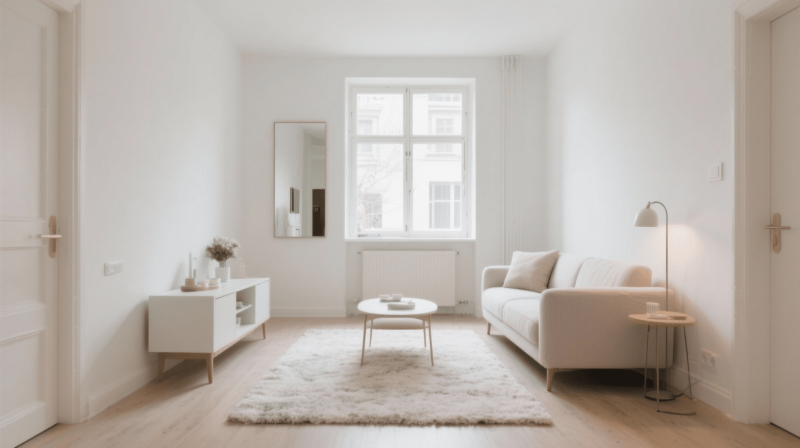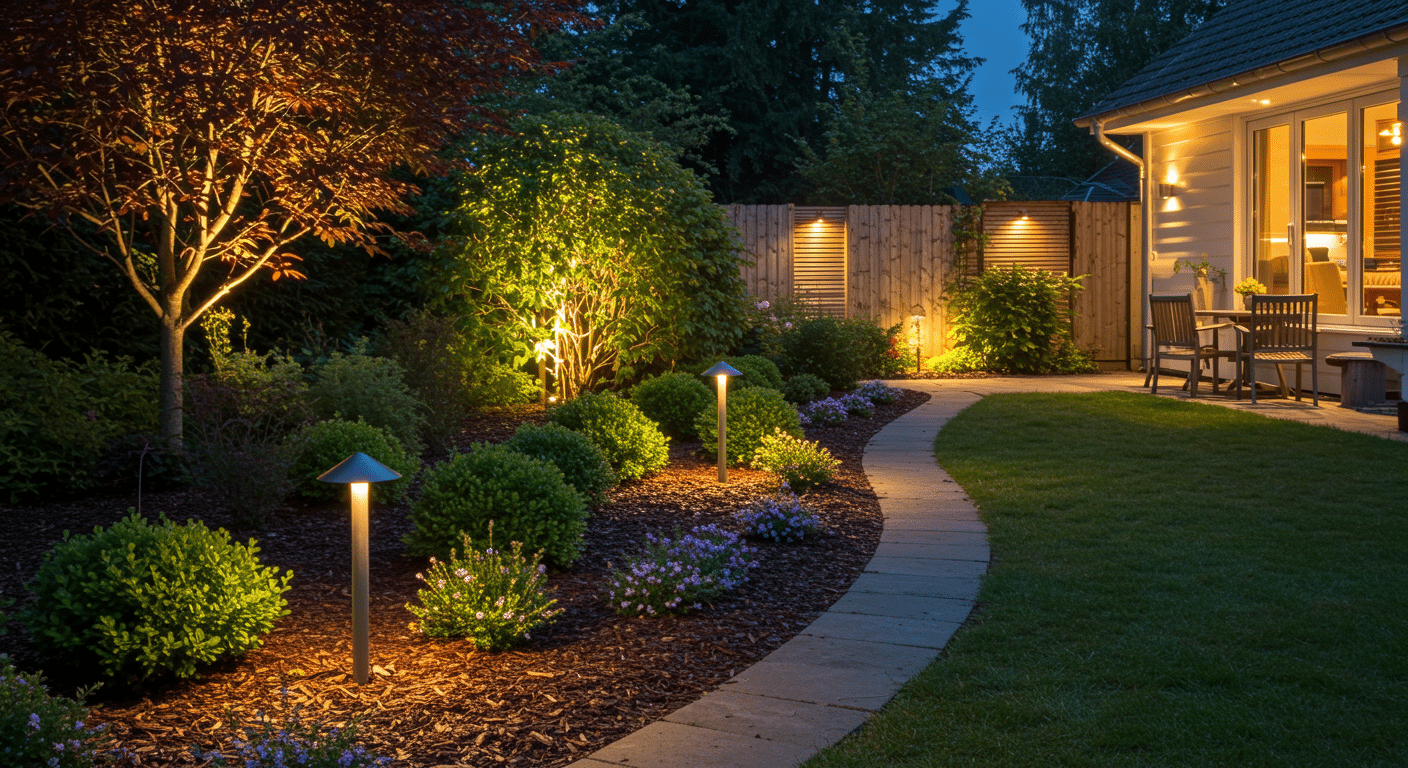The psychology of space is how rooms make us feel.
A bright kitchen makes you happy. A dark closet makes you uncomfortable. Your surroundings change your mood.
Room size matters. Big rooms make you feel free. Small rooms help you focus. Too small feels cramped. Too big feels empty.
Colors affect your mood. Blue calms you. Red energizes you. Yellow cheers you up. Green relaxes you. White feels clean.
Light changes everything. Sunlight makes you happier. Bright lights keep you alert. Soft lights help you relax. Dim lights make you tired.
Furniture placement matters too. Furniture against the walls creates open space. Grouped furniture feels cozy. Clear walkways reduce stress.
Your home affects your mood daily. Here’s how to change your space to feel better.
Design Tips to Make a Small Room Look Bigger
With the right design choices, you can make any compact room feel open, airy, and functional.
These techniques will show you exactly how to make a small room look bigger, using smart color choices, lighting tricks, and simple furniture swaps.
1. Use Light Colors on Walls
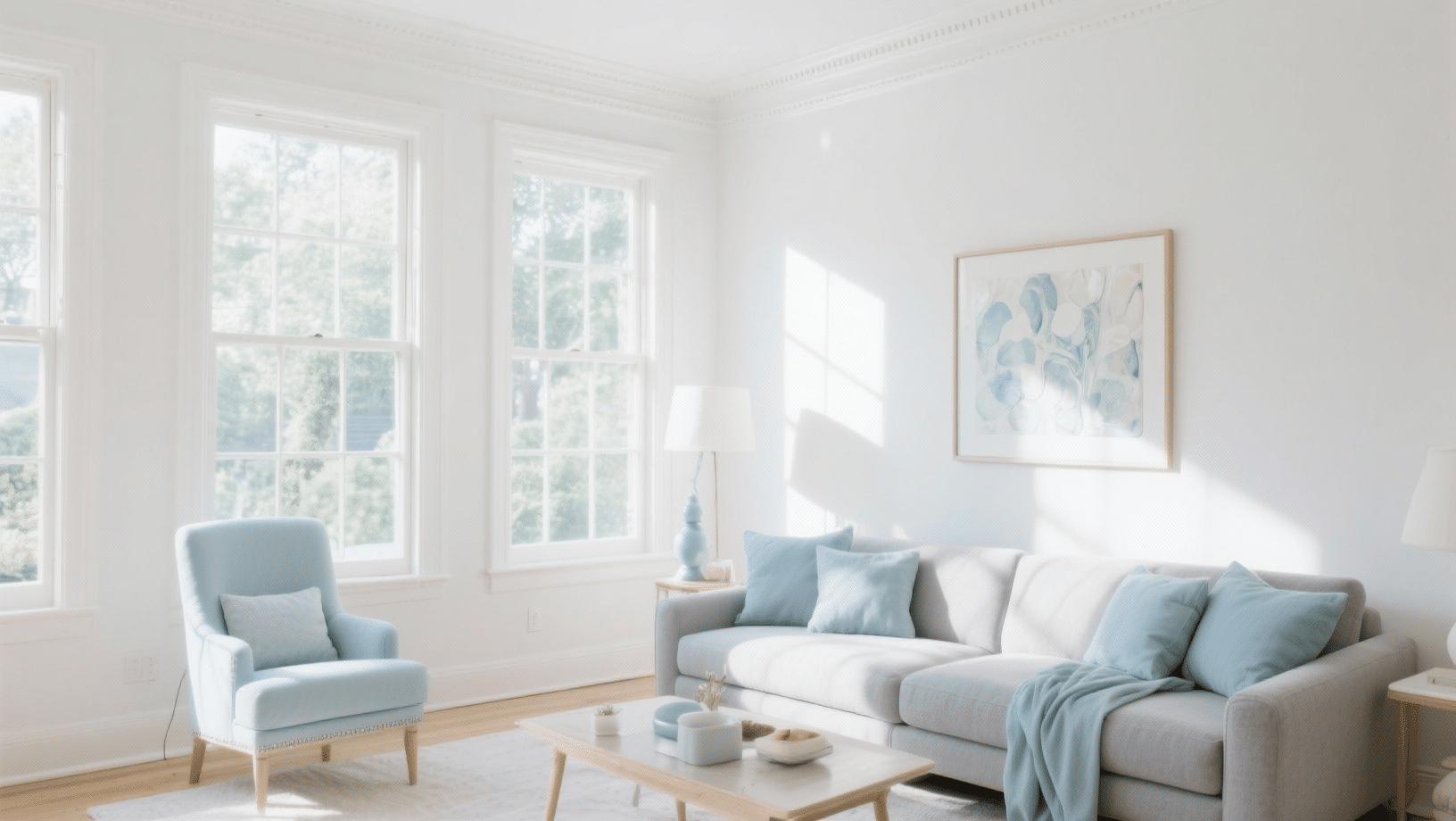
Light shades reflect more brightness than dark tones, which makes rooms feel bigger. White, cream, soft gray, and pale blue are your best options.
When you paint walls, ceiling, and trim in similar light colors, the room’s boundaries blur and space appears to expand.
Matte or eggshell finishes work better than glossy paint, which can create distracting reflections.
2. Hang Mirrors Strategically

One of the easiest tricks for how to make a small room look bigger is using mirrors.
Mirrors bounce light around and create the illusion of double the space. Position a large mirror across from a window to maximize natural brightness.
Floor-to-ceiling options work great in tight hallways and small bedrooms.
Just avoid placing mirrors opposite messy areas since they’ll reflect clutter and make the room feel chaotic.
3. Choose Furniture with Exposed Legs
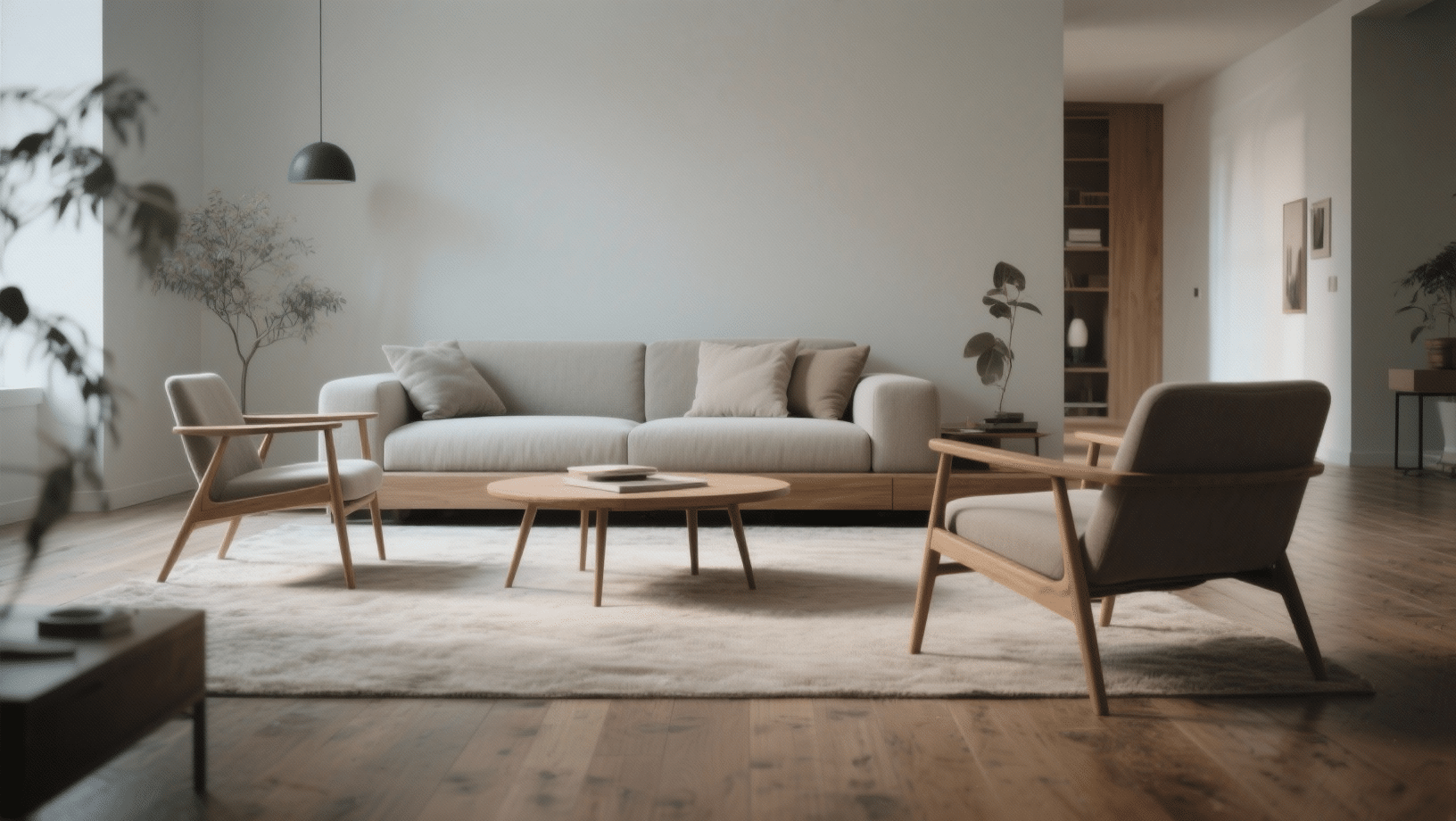
Sofas, chairs, and tables with visible legs let you see more floor, which tricks the eye into perceiving more space.
The gap underneath creates an airy, open feeling that heavy, floor-sitting furniture can’t match. Look for pieces raised at least 4-6 inches off the ground.
Mid-century modern styles typically feature this design, making them perfect for compact areas.
4. Mount Curtains High and Wide
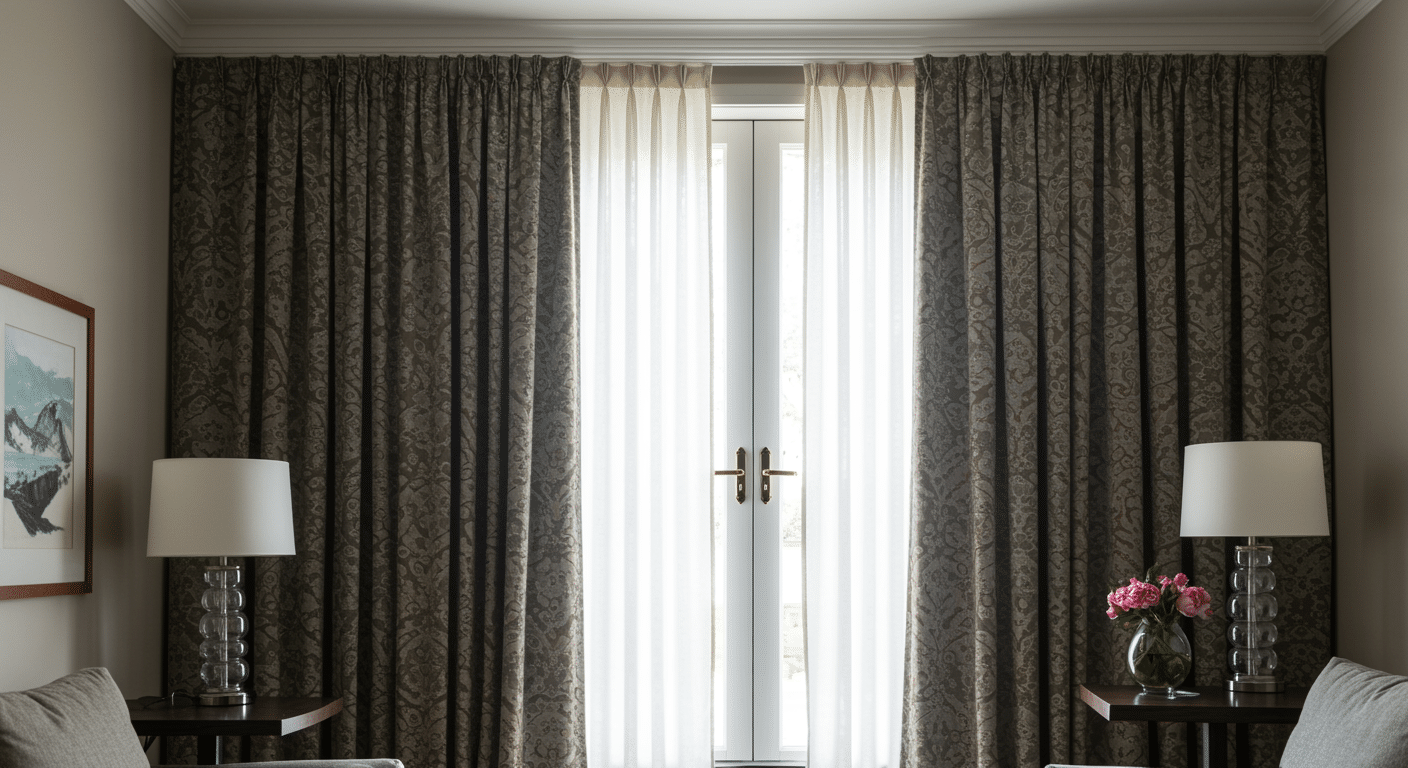
Install your curtain rod near the ceiling instead of right above the window frame.
Extend it 6-8 inches past each side of the window opening. This setup makes windows appear taller and wider than they actually are.
Your ceiling looks higher, and more natural light can enter when the curtains are fully open.
5. Select Multi-Functional Furniture
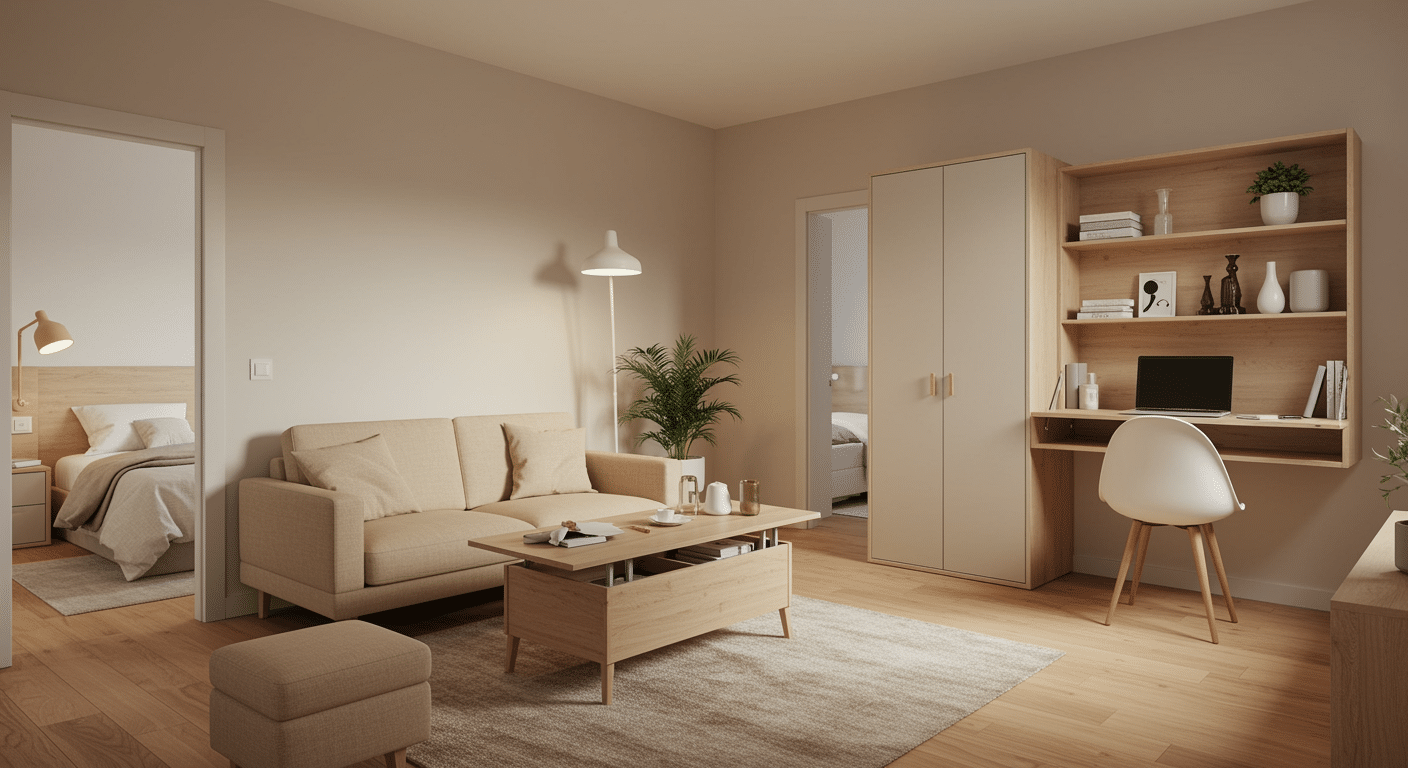
Storage ottomans, murphy beds, and extendable tables do double duty without hogging extra room. A coffee table that lifts to desk height serves two needs with one footprint.
Sofa beds handle seating by day and sleeping by night.
These smart pieces give you more function per square foot, which is critical in tight spaces.
6. Keep Floors Clear and Consistent
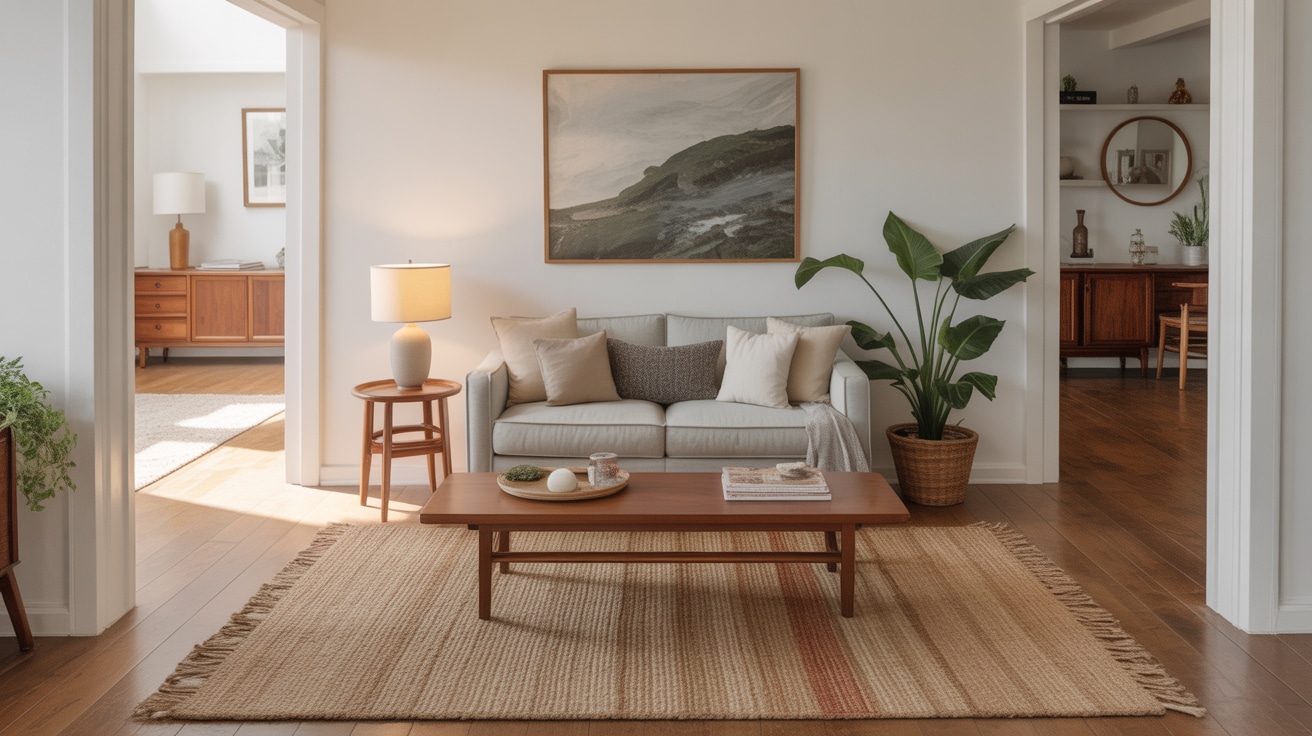
Use the same flooring material throughout connected rooms to create visual flow.
Breaking up floors with different rugs or materials chops space into smaller sections.
If you want a rug, pick one large piece that fits under all your furniture. Seeing continuous flooring makes the entire area feel more expansive and connected.
7. Add Vertical Storage Solutions
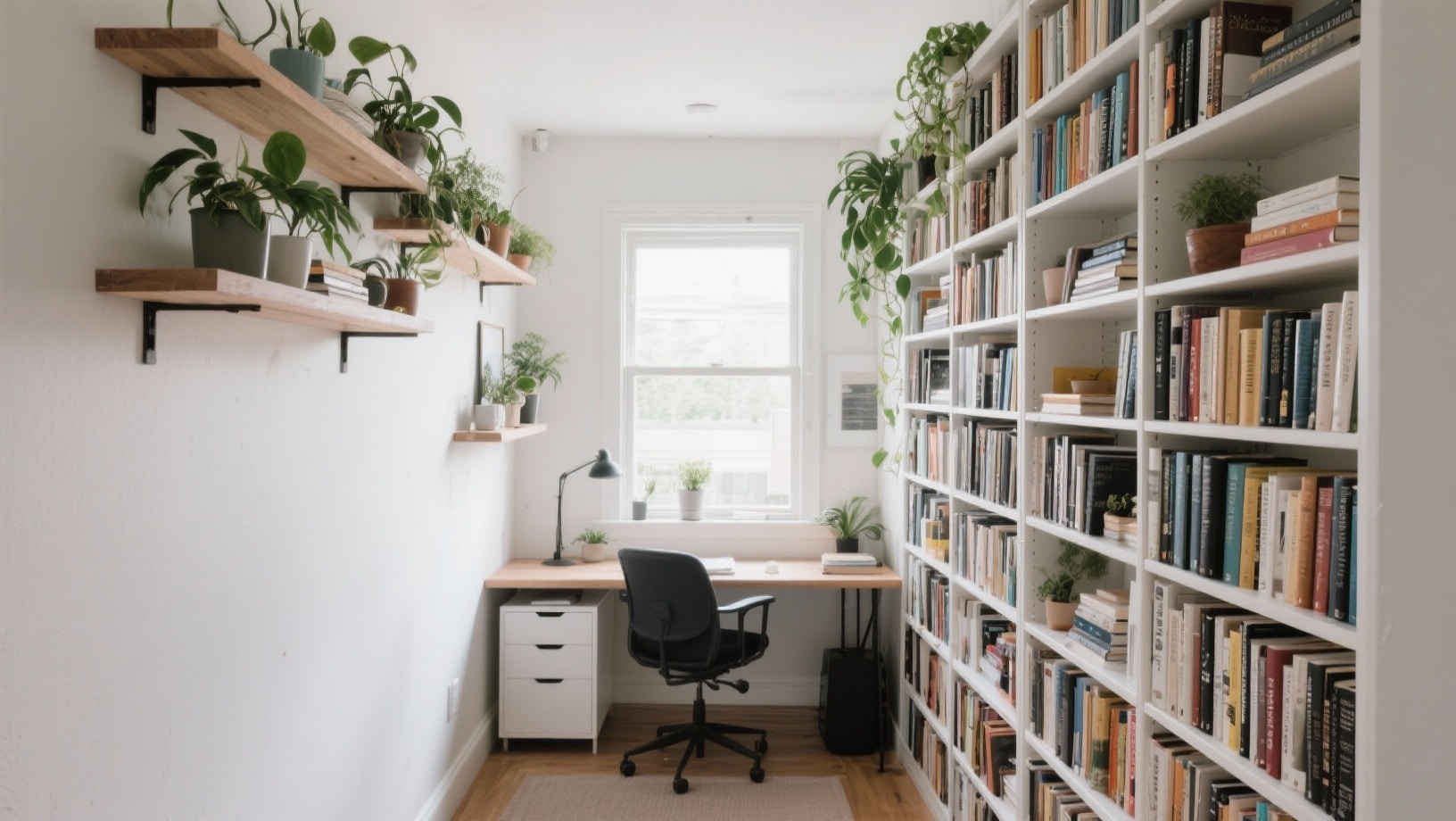
Tall bookcases and floor-to-ceiling cabinets pull eyes upward while providing storage without eating floor space.
Wall-mounted shelves keep surfaces clear and add display room where you need it.
Stacking storage vertically instead of spreading it horizontally makes ceilings appear higher. This approach works in every room, from kitchens to closets.
8. Let in Natural Light
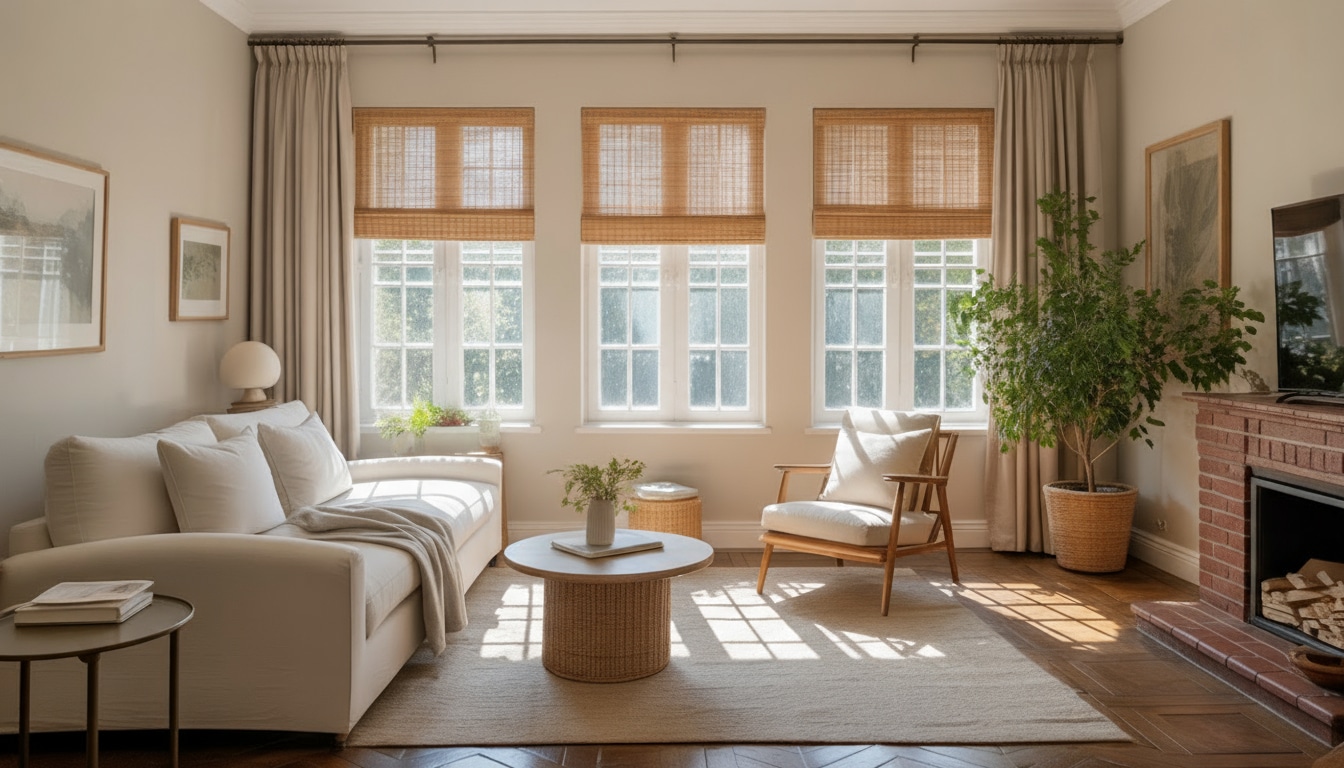
Remove heavy drapes and switch to sheer curtains or simple blinds that expose more glass.
Clean your windows inside and out so maximum light enters. Bright, naturally-lit rooms feel twice as large as dim ones.
If privacy is a concern, use top-down shades that let light in while blocking views at eye level.
9. Use Glass and Lucite Furniture
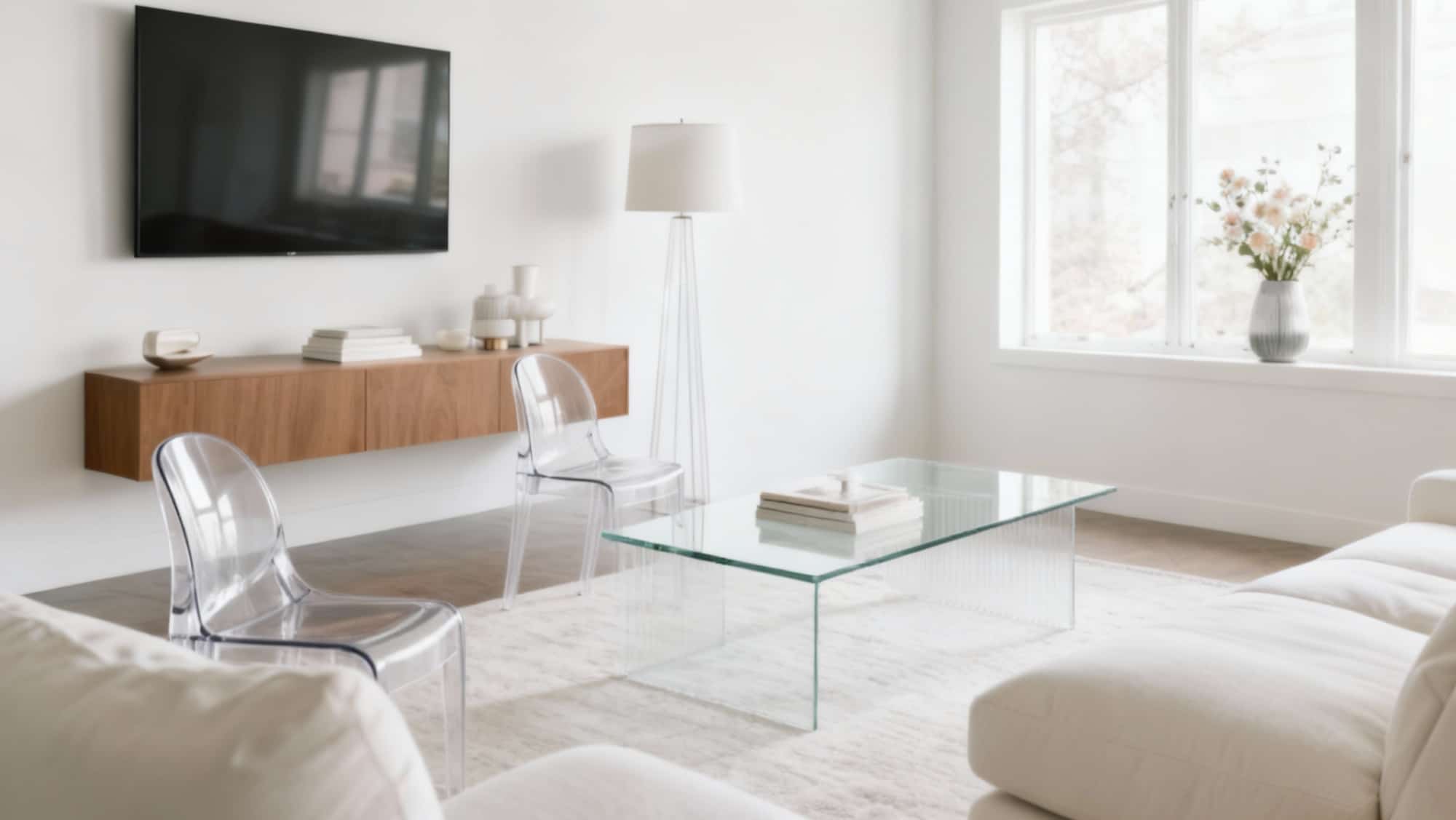
Transparent coffee tables, acrylic chairs, and glass side tables occupy physical space but stay visually invisible.
You can see straight through them, which maintains sightlines across the room.
These materials work especially well in living rooms and dining areas where solid furniture would create visual barriers. They’re also easy to clean and surprisingly durable for everyday use.
10. Create a Single Focal Point
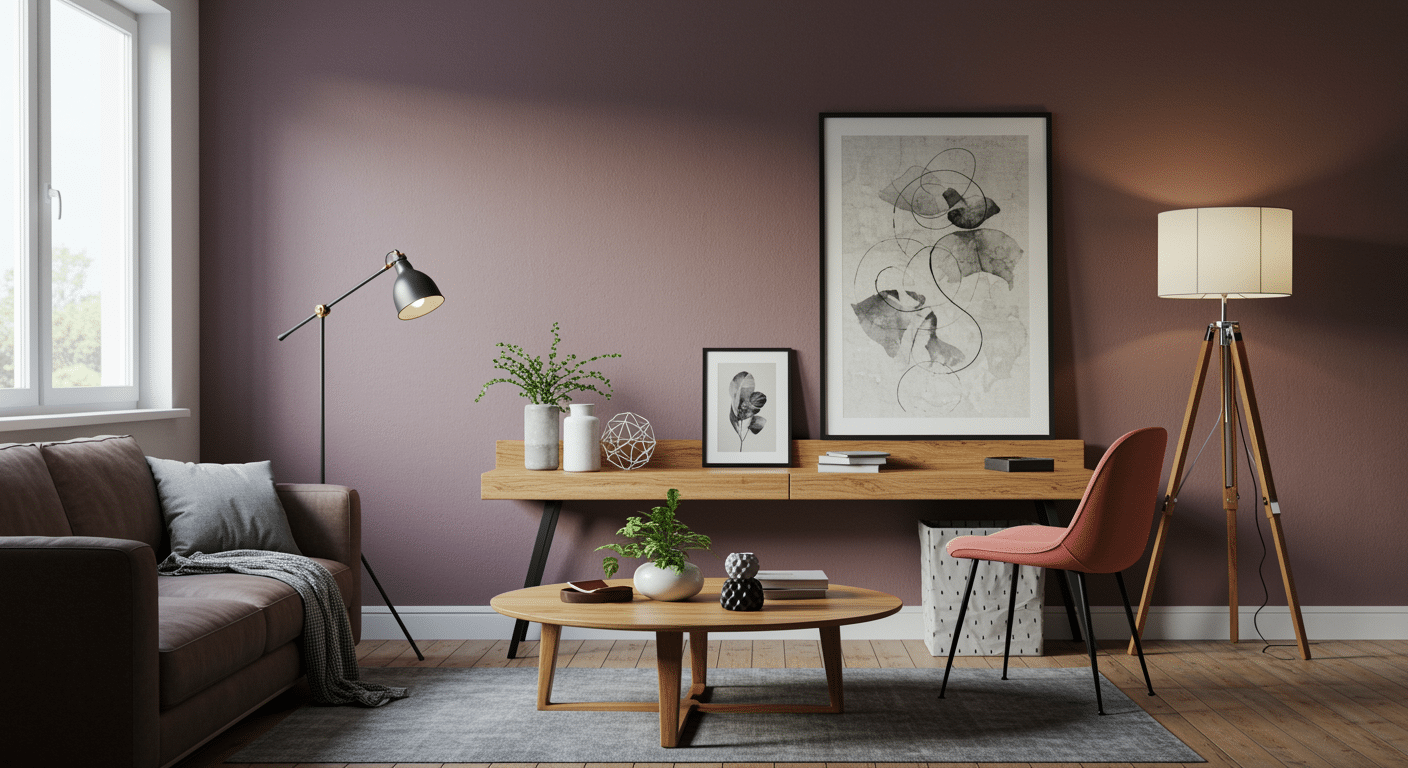
Pick one standout feature, an accent wall, bold artwork, or statement furniture piece, and keep everything else simple.
Multiple competing elements make small rooms feel busy and cramped.
When your eye has one clear place to land, the space feels organized and larger. Build your color scheme and decor around this focal point for a cohesive look.
11. Scale Down Your Furniture
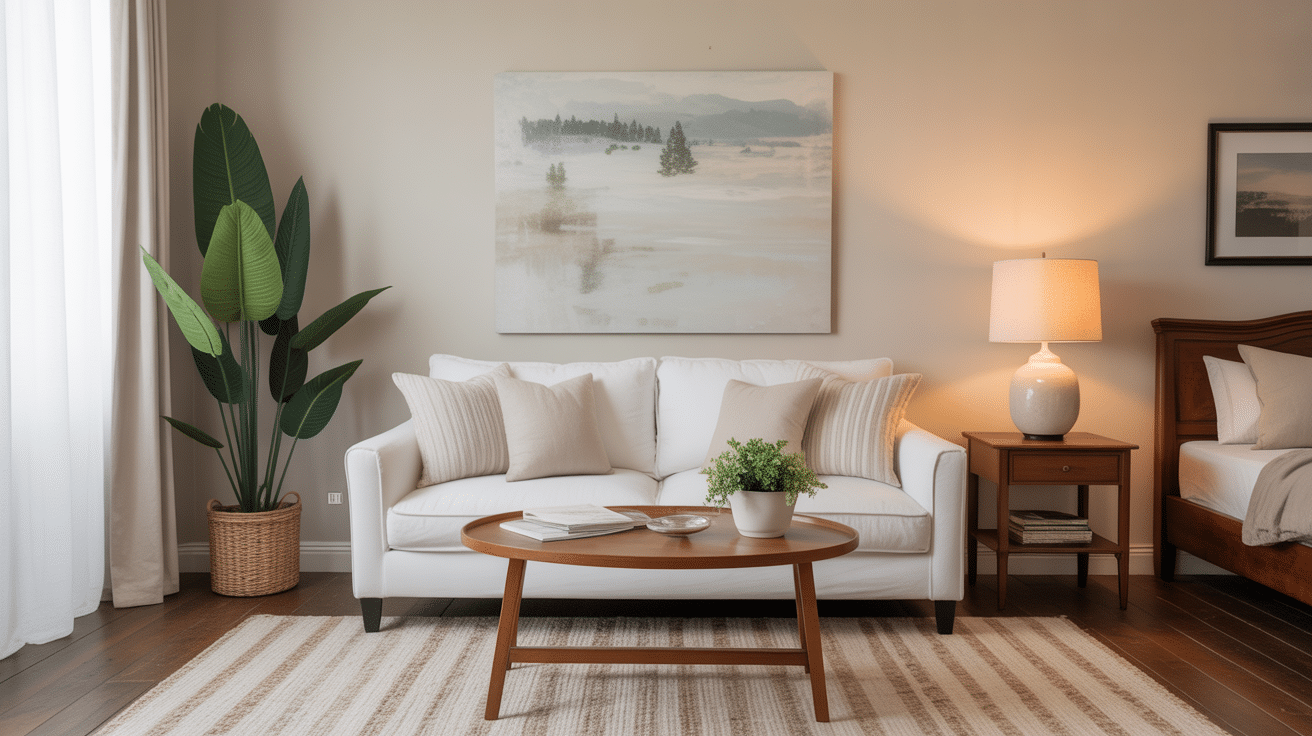
Oversized sofas and king beds eat up precious room and make everything feel tight.
Measure your space before buying and choose appropriately sized pieces.
A loveseat often fits better than a full sofa, and a queen bed leaves more floor space than a king. Proper scale creates breathing room and makes movement easier.
12. Paint the Ceiling a Lighter Shade
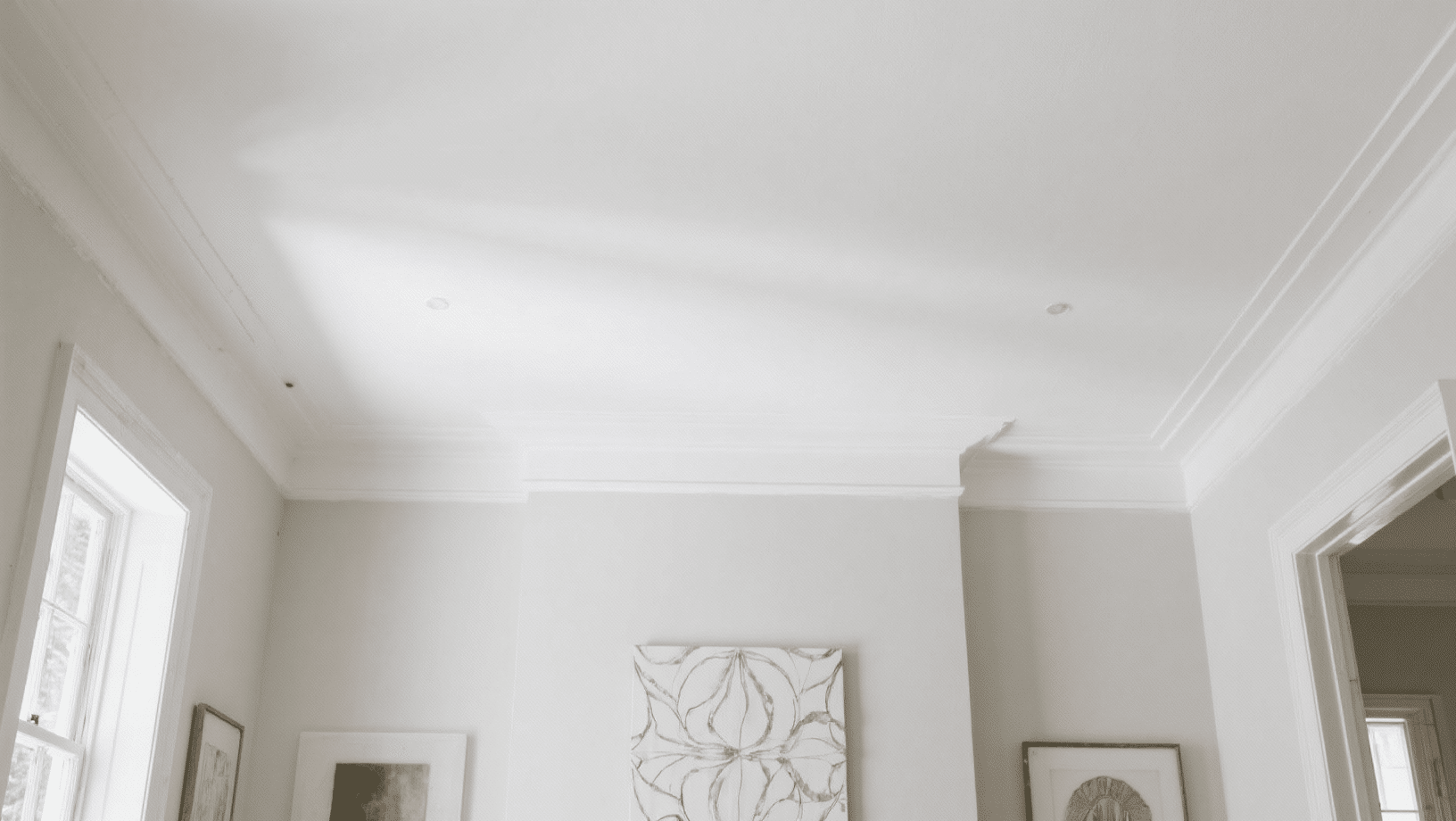
A ceiling painted lighter than your walls appears to sit higher up. Pure white reflects the most light and adds perceived height instantly.
This trick works especially well in rooms with low ceilings or limited natural light.
The contrast draws eyes upward and makes the whole room feel taller without any construction work.
13. Reduce Visual Clutter

Keep surfaces mostly clear and limit decorative objects to a few carefully chosen pieces.
Store everyday items in closed cabinets instead of leaving them on open shelves. Too many things on display make spaces feel smaller and chaotic.
A clean, minimalist approach lets the room itself shine and feel more spacious.
Designer Rules to Remember
- Function Before Beauty: Make rooms practical first, stylish second. Beautiful spaces that don’t work are failures. People need comfort every day.
- Less Is More: Don’t fill every corner. Empty space lets rooms breathe. Too much stuff creates clutter and stress.
- Match Scale and Proportion: Big furniture overwhelms small rooms. Small furniture gets lost in big rooms. Match furniture size to room size.
- Layer Your Lighting: Use three light types. Overhead lights for brightness. Task lights for work. Accent lights for mood.
- Create One Focal Point: Give each room one main feature. A fireplace, window, art piece, or statement furniture. Everything else supports it.
- Balance Visual Weight: Spread weight evenly across the room. Balance a big couch with a tall bookshelf. Don’t let one side feel heavy.
- Measure Twice: Measure spaces and doorways before buying furniture. Make sure everything fits through doors and suits the room.
- Design for Real Life: Choose materials that match the lifestyle. White couches don’t work with kids and pets. Be practical.
Follow these rules to create spaces that look great and work for everyday living.
The Bottom Line
Knowing how to make a small room look bigger comes down to smart design, not size.
Start with easy changes. Paint walls lighter, clear clutter, and let in natural light. These simple steps work without big expenses.
Remember that less is more in small spaces. Choose furniture that fits properly and serves multiple purposes.
Pick three tips from this list and start today. Which ones are you trying first?


